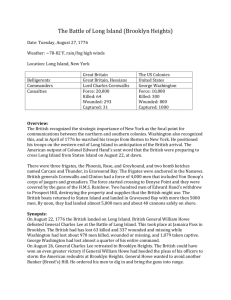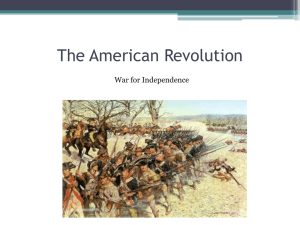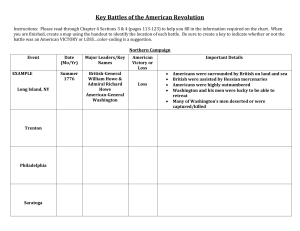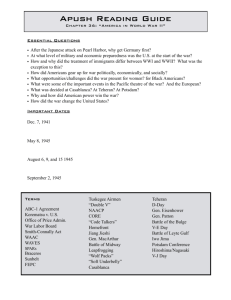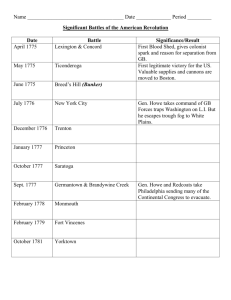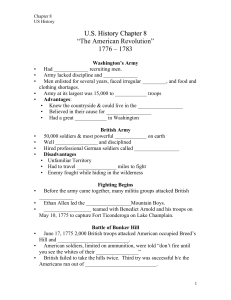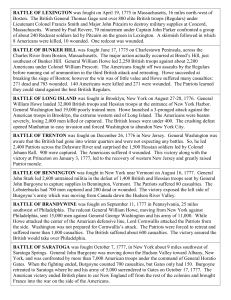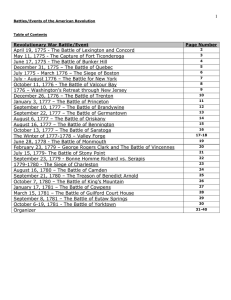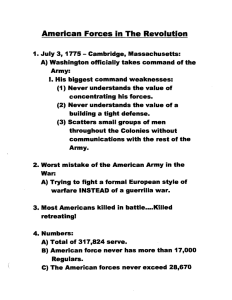The Battle Of Long Island (www.newsday.com/extras/lihistory/4/hs404a.htm)
advertisement
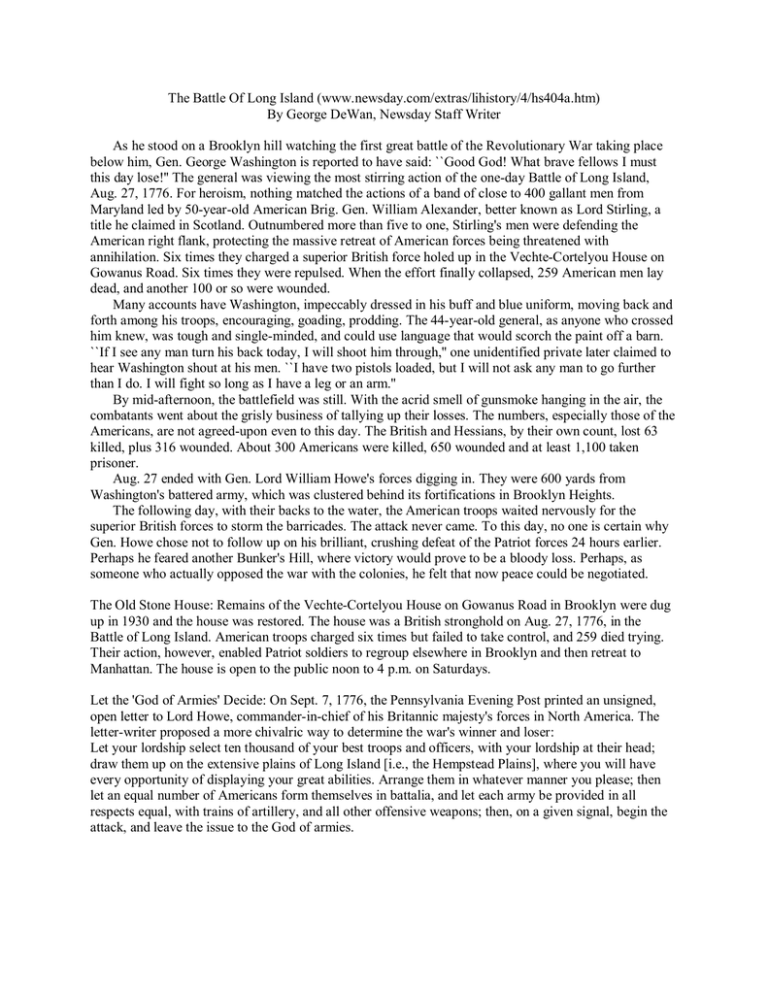
The Battle Of Long Island (www.newsday.com/extras/lihistory/4/hs404a.htm) By George DeWan, Newsday Staff Writer As he stood on a Brooklyn hill watching the first great battle of the Revolutionary War taking place below him, Gen. George Washington is reported to have said: ``Good God! What brave fellows I must this day lose!'' The general was viewing the most stirring action of the one-day Battle of Long Island, Aug. 27, 1776. For heroism, nothing matched the actions of a band of close to 400 gallant men from Maryland led by 50-year-old American Brig. Gen. William Alexander, better known as Lord Stirling, a title he claimed in Scotland. Outnumbered more than five to one, Stirling's men were defending the American right flank, protecting the massive retreat of American forces being threatened with annihilation. Six times they charged a superior British force holed up in the Vechte-Cortelyou House on Gowanus Road. Six times they were repulsed. When the effort finally collapsed, 259 American men lay dead, and another 100 or so were wounded. Many accounts have Washington, impeccably dressed in his buff and blue uniform, moving back and forth among his troops, encouraging, goading, prodding. The 44-year-old general, as anyone who crossed him knew, was tough and single-minded, and could use language that would scorch the paint off a barn. ``If I see any man turn his back today, I will shoot him through,'' one unidentified private later claimed to hear Washington shout at his men. ``I have two pistols loaded, but I will not ask any man to go further than I do. I will fight so long as I have a leg or an arm.'' By mid-afternoon, the battlefield was still. With the acrid smell of gunsmoke hanging in the air, the combatants went about the grisly business of tallying up their losses. The numbers, especially those of the Americans, are not agreed-upon even to this day. The British and Hessians, by their own count, lost 63 killed, plus 316 wounded. About 300 Americans were killed, 650 wounded and at least 1,100 taken prisoner. Aug. 27 ended with Gen. Lord William Howe's forces digging in. They were 600 yards from Washington's battered army, which was clustered behind its fortifications in Brooklyn Heights. The following day, with their backs to the water, the American troops waited nervously for the superior British forces to storm the barricades. The attack never came. To this day, no one is certain why Gen. Howe chose not to follow up on his brilliant, crushing defeat of the Patriot forces 24 hours earlier. Perhaps he feared another Bunker's Hill, where victory would prove to be a bloody loss. Perhaps, as someone who actually opposed the war with the colonies, he felt that now peace could be negotiated. The Old Stone House: Remains of the Vechte-Cortelyou House on Gowanus Road in Brooklyn were dug up in 1930 and the house was restored. The house was a British stronghold on Aug. 27, 1776, in the Battle of Long Island. American troops charged six times but failed to take control, and 259 died trying. Their action, however, enabled Patriot soldiers to regroup elsewhere in Brooklyn and then retreat to Manhattan. The house is open to the public noon to 4 p.m. on Saturdays. Let the 'God of Armies' Decide: On Sept. 7, 1776, the Pennsylvania Evening Post printed an unsigned, open letter to Lord Howe, commander-in-chief of his Britannic majesty's forces in North America. The letter-writer proposed a more chivalric way to determine the war's winner and loser: Let your lordship select ten thousand of your best troops and officers, with your lordship at their head; draw them up on the extensive plains of Long Island [i.e., the Hempstead Plains], where you will have every opportunity of displaying your great abilities. Arrange them in whatever manner you please; then let an equal number of Americans form themselves in battalia, and let each army be provided in all respects equal, with trains of artillery, and all other offensive weapons; then, on a given signal, begin the attack, and leave the issue to the God of armies.
